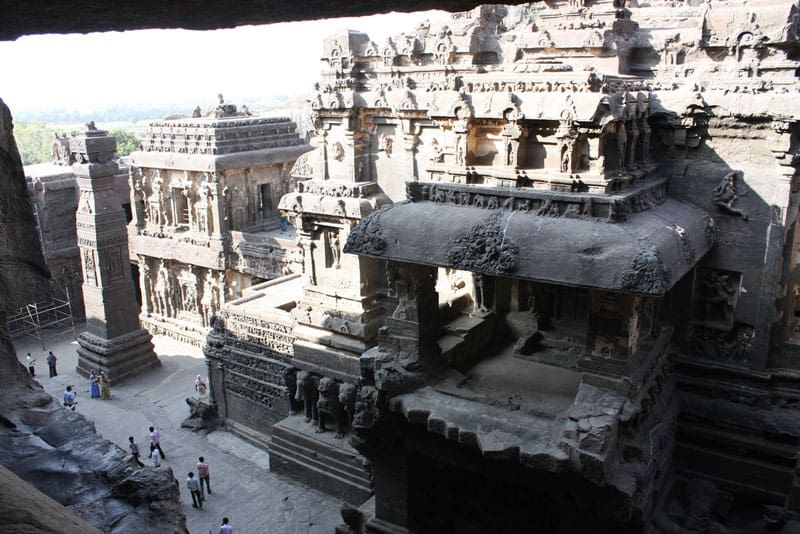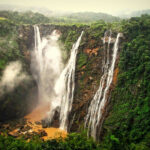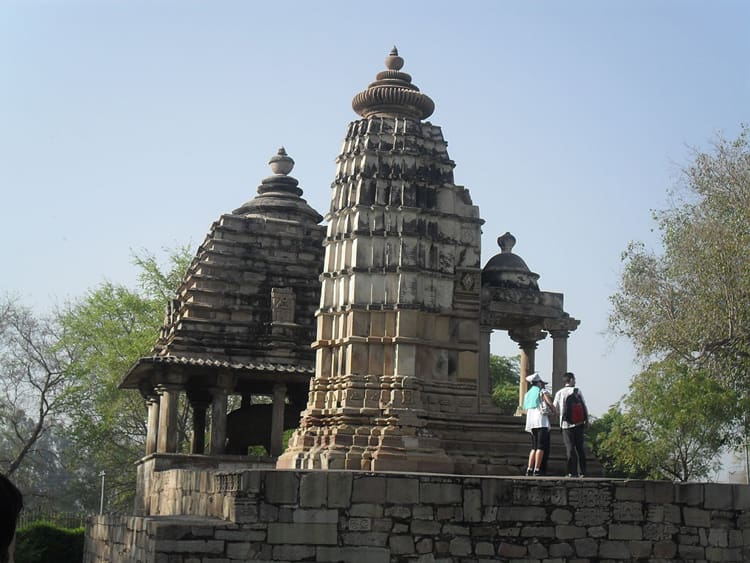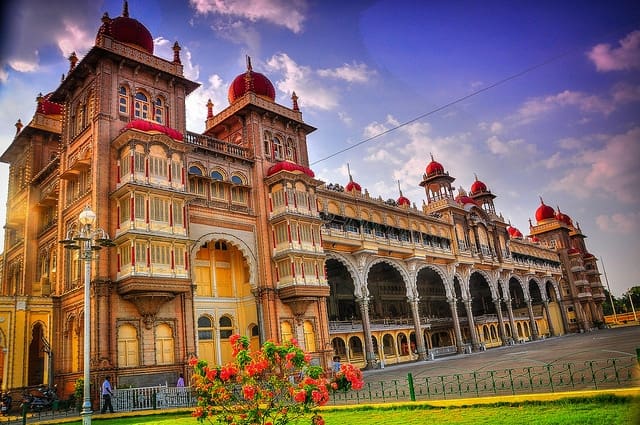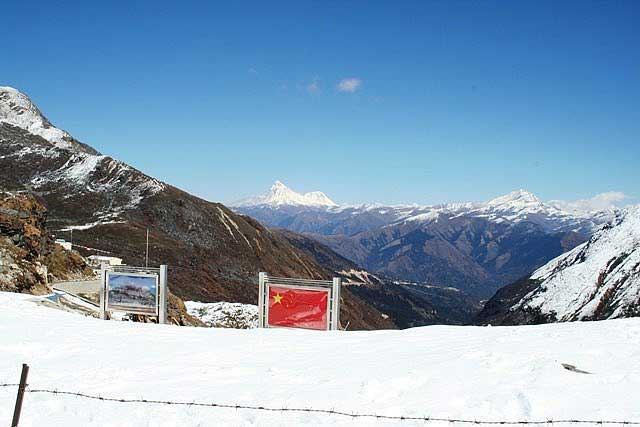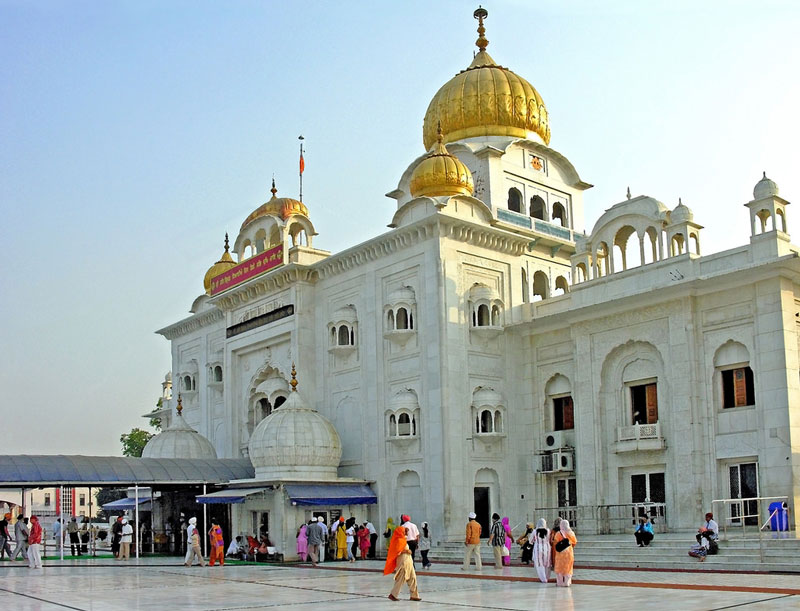The Aurangabad Caves represent a confluence of spirituality, art, and architecture. Situated amidst tranquil hills overlooking the bustling city of Aurangabad, these caves encapsulate centuries of Buddhist meditation, royal patronage, and artistic innovation. Far more than mere stone chambers, the Aurangabad Caves are living chronicles of India’s vibrant Buddhist past, beckoning historians, scholars, and travelers to witness their timeless allure.
Historical Context: Tracing the Origins of Aurangabad Caves
Early Development and Patronage
Excavated over multiple centuries from approximately the 2nd to 7th centuries CE, the Aurangabad Caves were developed during a period when Buddhism was flourishing across the Deccan plateau. The caves were strategically located along ancient trade routes that connected inland India with trading centers of the west coast, fostering the movement of ideas, art, and commerce.
The construction witnessed significant support from powerful dynasties:
-
Satavahana Dynasty (2nd century CE): Initiated the earliest phase of excavation and promoted Buddhist monasticism.
-
Vakataka Dynasty (4th–5th centuries CE): Expanded cave construction and introduced more complex iconographic programs.
-
Chalukya Rulers (6th–7th centuries CE): Further enriched the site, adding new caves and refining artistic motifs.
Through their sustained patronage, these dynasties ensured the transmission of Buddhist teachings and provided sanctuaries for monks.
Cultural Syncretism and Religious Evolution
Trade and pilgrimage brought together diverse communities, influencing the caves’ stylistic features. The gradual transition from Hinayana to Mahayana Buddhism is witnessed in the proliferation of Bodhisattva figures, elaborate iconographies, and worship spaces for lay devotees. Inscriptions in Brahmi and later scripts reflect not only the donor networks but also the evolution of languages and belief systems in ancient India.
Architectural Overview: Unraveling the Layout and Artistic Innovations
Groupings and Spatial Plan
The twelve principal caves are organized into three main groups:
-
Western Group (Caves I–V): Predominantly monastic with large assembly halls (viharas), sanctum niches, and resident monks’ cells.
-
Eastern Group (Caves VI–IX): Known for richly sculpted doorways, spacious chambers, and detailed narrative panels.
-
Northern Group (Caves X–XII): Houses some of the site’s largest Buddha statues and simpler, later-phase constructions.
Each group reveals a unique blend of functional and ceremonial spaces, underscoring the importance of both communal worship and solitary meditation in monastic life.
Structural Elements and Innovations
The core architectural features include:
-
Chaityas (Prayer Halls): Characterized by barrel-vaulted roofs, apsidal ends, and centrally placed stupas, inviting congregational worship.
-
Viharas (Monasteries): Square or rectangular halls surrounded by individual monk cells, with sanctums enshrining sacred Buddha images.
-
Facades and Porticos: Ornate entrances adorned with relief sculptures, guardian figures, and symbolic motifs such as lotuses and dharmachakras.
-
Multi-tiered Verandas: Transitional spaces between the cave interiors and the outer landscape, often used for teaching and reflection.
Artisans achieved remarkable symmetry and geometric precision, despite working with rough basalt using only chisels and hammers.
Profound Sculptural Legacy: Exploring the Artistic Riches
Masterpieces of Buddhist Iconography
Every cave is a canvas exhibiting a sophisticated visual language:
-
Buddha Images: Seated in meditation or teaching poses, sometimes surrounded by a retinue of Bodhisattvas, disciples, and devotees.
-
Bodhisattvas: Especially Padmapani (Avalokitesvara) and Vajrapani, depicted with jeweled crowns, flowing drapery, and serene expressions.
-
Goddess Tara: The compassionate feminine principle in Mahayana Buddhism is represented with grace and authority.
-
Mythical Figures and Attendants: Including apsaras (celestial dancers), yakshinis, guardians, and nagas (serpentine beings).
Narrative Reliefs and Symbolism
The sculptural program includes:
-
Jataka Tales: Scenes illustrating moral stories from Buddha’s previous lives, teaching compassion, self-sacrifice, and duty.
-
Guardians and Threshold Deities: Placed on doorways to symbolize protection and demarcate sacred space.
-
Floral and Geometric Patterns: Used to frame principal images, suggest abundance, and underscore the connection between spiritual and material realms.
-
Polychrome Traces: Faint pigments on sculptures and walls suggest that once, these stone images blazed with color, linking the caves to the painted traditions of Ajanta.
Detailed Cave-by-Cave Description
Cave I – Architectural Simplicity and Spiritual Depth
Primarily a vihara, Cave I features a central sanctum with a stately Buddha in dhyana mudra (meditation pose), flanked by simplistic but elegant Bodhisattvas. The spatial organization encourages contemplation and silence, ideal for focused meditation.
Cave II – The Sacred Chaitya-Griha
Noted for its apsidal plan and stupa at the rear, Cave II’s prayer hall summons worshippers to participate as a community. Massive pillars with sculpted capitals support the vaulted ceiling, while intricate lattices filter sunlight, creating a dramatic interplay of shadow and illumination.
Caves III & IV – Multifunctional Monasteries
These caves display larger assembly halls, multiple cells, and vivid wall reliefs. Tales from Buddha’s life—such as his renunciation and enlightenment—adorn the walls, while large shrines house teaching Buddhas. The blend of the sacred and the utilitarian is evident in the dual use of space for both ritual and residence.
Caves VI & VII – Artistic Flourish of the Mahayana Era
Here, artistry reaches its apogee with the grand figure of Padmapani, crowned and attended by devotees. The Tara sculptures project strength and maternal compassion. Rhythmic friezes, ornamental arches, and feminist iconography indicate the influence of evolving Buddhist philosophy.
Caves IX & X – Later Monastic Constructions
These caves feature large seated Buddha figures, simplified floor plans, and direct access from the hillside, reflecting the adaptation of Buddhism to changing social and religious dynamics.
Caves XI & XII – The Final Phase
The northernmost caves, successively plainer but monumental, focus on the centrality of the Buddha image for worshippers. The craftsmanship, while less ornate, signals the shift to inclusive, lay-oriented practices and the decline in extensive patronage.
Socio-Religious Significance: Beyond Stone and Sculpture
Centers for Meditation and Education
Besides being places of worship, the caves functioned as full-fledged monastic universities. Monks engaged in meditation, philosophical debates, and scriptural study. The multiplicity of cells, libraries, and assembly halls reflects the vibrant learning environment.
Pilgrimage Network
The Aurangabad Caves were a crucial node in a larger pilgrimage network that linked important Buddhist centers such as Ajanta, Ellora, and the Kanheri Caves. Traders, monks, and royal delegations traversed these routes, facilitating the exchange of goods and spiritual ideas.
Signs of Prosperity and Decline
Elaborate carvings and donor inscriptions reveal periods of material support and vibrant community life. Yet, unfinished caves and a simplification of later art point to shifting patronage and the gradual waning of Buddhist authority in the region.
Cross-Comparisons: Aurangabad, Ajanta, and Ellora
| Aspect | Aurangabad Caves | Ajanta Caves | Ellora Caves |
|---|---|---|---|
| Religion | Buddhist (Hinayana & Mahayana) | Buddhism (early and late phases) | Buddhist, Hindu, Jain |
| Key Features | Viharas, Bodhisattva sculptures, Tara art | Murals, stupa caves, narrative friezes | Kailasa Temple, monumental sculptures |
| Number of Caves | 12 | 30 | 34 |
| Time Period | 2nd–7th century CE | 2nd–6th century CE | 6th–10th century CE |
| Art Style | Relief sculpture, limited polychromy | Fresco painting, high-relief sculpture | Free-standing temples, grand statues |
| UNESCO Status | Not yet declared | UNESCO World Heritage Site | UNESCO World Heritage Site |
| Publicity | Lesser-known, tranquil | Globally famous, heavily visited | Globally famous, mixed crowds |
Conservation, Challenges, and Modern Interpretations
Preservation Issues
-
Erosion and Biological Damage: Exposure to wind, rain, and invasive plant roots has caused surface abrasion and interior humidity.
-
Urban Encroachment: Growth of Aurangabad city adds pressure through pollution and unregulated visitation.
Restoration Actions
-
Structural Reinforcement: The Archaeological Survey of India (ASI) has stabilized vulnerable sections, protected wall reliefs, and installed barriers to limit direct contact.
-
Documentation and Digitization: 3D scans and digital records ensure long-term preservation and global access for researchers.
-
Visitor Management: Clear signage, timed entry, and trained guides are some measures introduced to enhance the visitor experience while protecting the site.
Visitor Experience: Planning Your Journey
Getting There
The caves are situated just northwest of Aurangabad city, accessible via taxi, auto-rickshaw, or local buses from the city center. The approach road winds through scenic hills, affording panoramic views of both the landscape and Aurangabad landmarks such as the Bibi Ka Maqbara.
What to Expect
-
Natural Setting: Surrounded by forests, the climb to the caves rewards visitors with cool breezes and sweeping vistas.
-
Photographic Opportunities: Early morning and late afternoon light bring out the best in the weathered stone and intricate carvings.
-
Accessibility Concerns: The paths can be steep and uneven; visitors should wear sturdy shoes and be prepared for a short hike.
-
Interpretive Signage: Most caves have informative plaques detailing their history, iconography, and significance.
Best Times and Practical Tips
-
October to March is the most comfortable period for exploring the caves.
-
Carry water and minimal luggage; facilities are basic but clean.
-
Engage local authorized guides for richer context.
Deep Dive: Unique Features and Hidden Details
Rare Depictions of Female Divinities
Few Indian cave sites feature the goddess Tara and other feminine divine representations as prominently as Aurangabad. These sculptures demonstrate a theological shift and the rise of esoteric Buddhist traditions, making the caves a focus point for students of gender studies in religion.
Polychromy and Lost Color
Remnants of paint suggest the caves were once covered in bright pigments—reds, yellows, blues—applied over fine lime plaster. The loss of this polychrome surface is a reminder of the site’s evolving aesthetic and environmental challenges.
Inscriptions as Windows to the Past
Carved inscriptions in Brahmi and early Devanagari scripts chronicle donors’ names, their professions, and their acts of piety. Such texts help historians reconstruct the economic and social networks that sustained Buddhist monastic communities.
Unfinished Chambers
Several caves bear rough hewn surfaces, abrupt stops to gallery walls, or incomplete pillars, indicating either a decline in patronage or a sudden shift in the political-religious landscape.
Local Legends and Folklore
Generations of Aurangabad residents have woven tales around the caves—some describing hidden treasures, others invoking supernatural guardians said to protect the caves’ sanctity. Each legend adds another layer to the site’s allure, blending historical fact with imaginative storytelling.
Modern Relevance and Tourism
Educational Value
The caves serve as open-air classrooms for art historians, archaeologists, and students. Exhibitions and lectures facilitated by universities and cultural institutions keep the legacy thriving.
Community Involvement
Local communities are actively involved in preserving traditional arts, running handicraft markets, and offering hospitality services. These interactions inject much-needed economic vitality while nurturing a sense of pride and stewardship toward heritage.
Responsible Tourism
With increasing awareness, tourists are becoming partners in preservation—supporting eco-friendly practices, respecting restricted areas, and participating in heritage walks that stress minimal impact.
Conclusion: The Enduring Spirit of Aurangabad’s Caves
The Aurangabad Caves are not merely remnants of a lost civilization—they are active witnesses to an enduring spiritual quest and artistic brilliance that continues to inspire the present. Their silent chambers, sacred icons, and storied walls offer a passage into India’s profound Buddhist heritage.
FAQs with Detailed Answers
-
Where are the Aurangabad Caves situated and how can one get there?
The caves are nestled in the hills, approximately 2km north of Bibi Ka Maqbara in Aurangabad, Maharashtra. They are easily accessible by road via taxis, auto-rickshaws, or local buses. -
What is the historical importance of these caves?
The caves exemplify Buddhist monastic tradition between the 2nd and 7th centuries CE, showcasing the transition from Hinayana to Mahayana Buddhism and highlighting the region’s rich history as a center of learning and spirituality. -
How many caves make up the Aurangabad Caves complex?
There are twelve principal caves divided into three groups, each with unique architectural and sculptural features. -
What makes the sculptures at Aurangabad Caves unique?
The caves feature rare representations of Mahayana deities such as Tara and Padmapani, richly detailed narrative reliefs, and traces of vibrant pigments from ancient times. -
Who commissioned the construction of the Aurangabad Caves?
Various dynasties, especially the Satavahanas, Vakatakas, and later Chalukyas, patronized the excavation and embellishment of these caves. -
What kind of religious art can be seen here?
You’ll find Buddhist sculptures including the Buddha, Bodhisattvas, mythological beings, and narrative panels from Jataka tales. -
Are any legends associated with the caves?
Local stories tell of mystical guardians, hidden treasures, and miraculous events, contributing to the caves’ rich folklore. -
Are the caves accessible to all visitors?
The approach path is steep and uneven, potentially challenging for those with mobility issues. -
What is the best time of day to visit?
Early mornings and late afternoons are ideal for comfortable weather and optimal lighting for photography. -
How long should a visit typically take?
Allow at least two to three hours for a thorough exploration, especially with a guide. -
Are guided tours available on site?
Yes, knowledgeable guides offer insights into the history, art, and hidden stories of the caves. -
Can visitors take photographs inside the caves?
Photography is permitted, but the use of flash and tripods may be restricted to protect delicate surfaces. -
Are the caves painted inside?
While most interior paintings have faded, faint traces of original colors remain, especially in protected areas. -
What nearby attractions can be combined with a visit to the caves?
Popular sites include Bibi Ka Maqbara, Ellora Caves, Daulatabad Fort, Panchakki, and Grishneshwar Temple. -
What are the conservation challenges facing the Aurangabad Caves?
Major concerns include natural weathering, surges in tourist numbers, and urban encroachment, although robust conservation and visitor management initiatives are ongoing.


